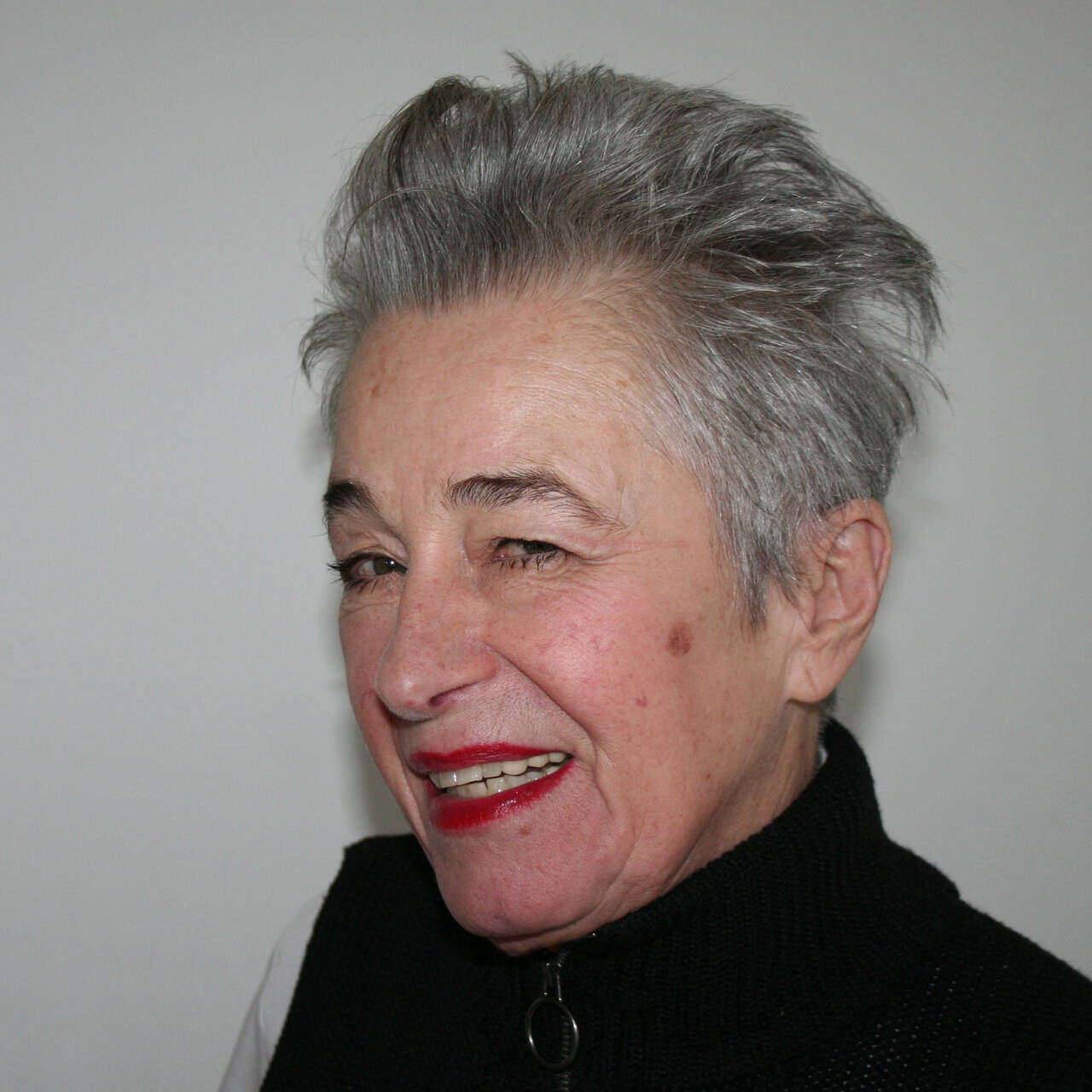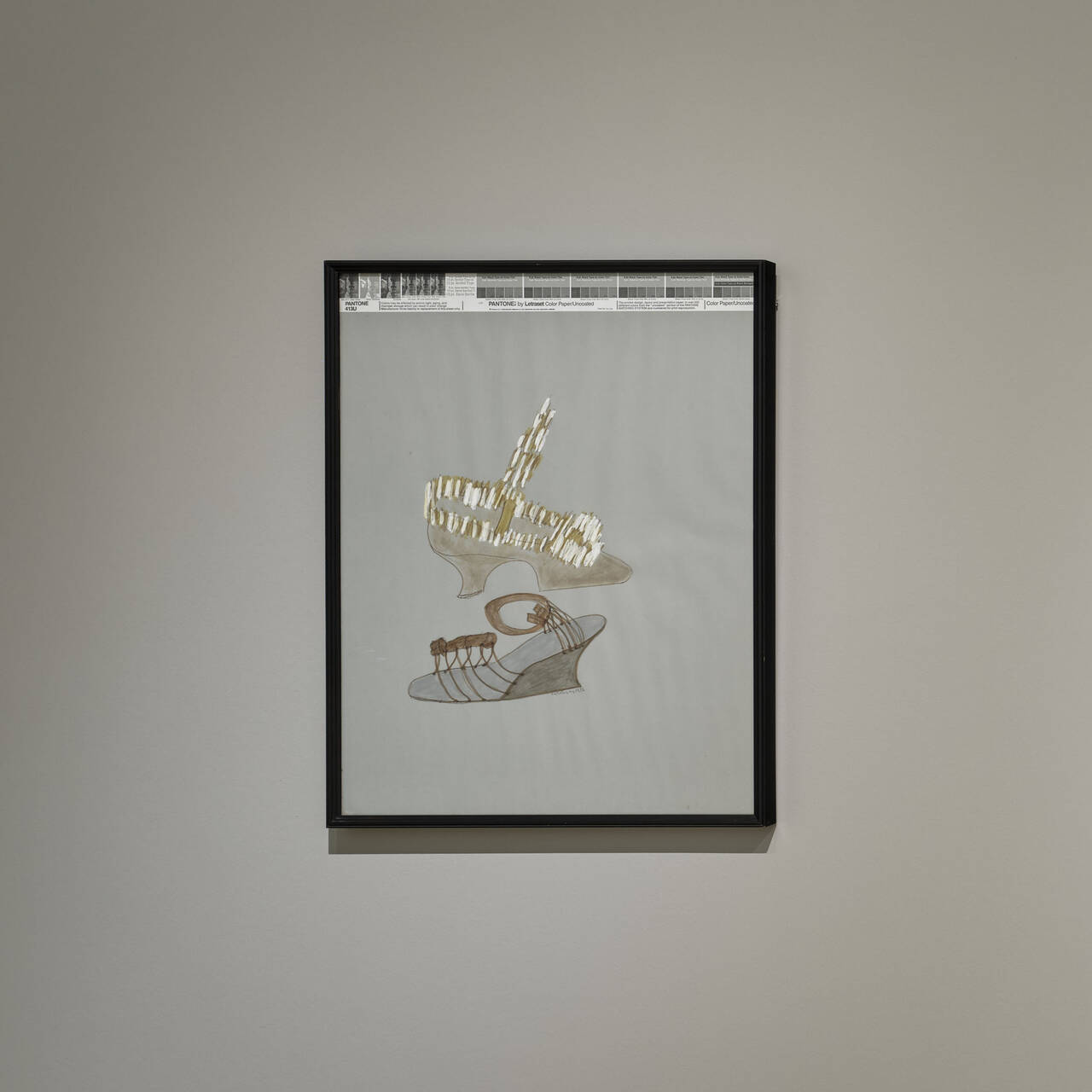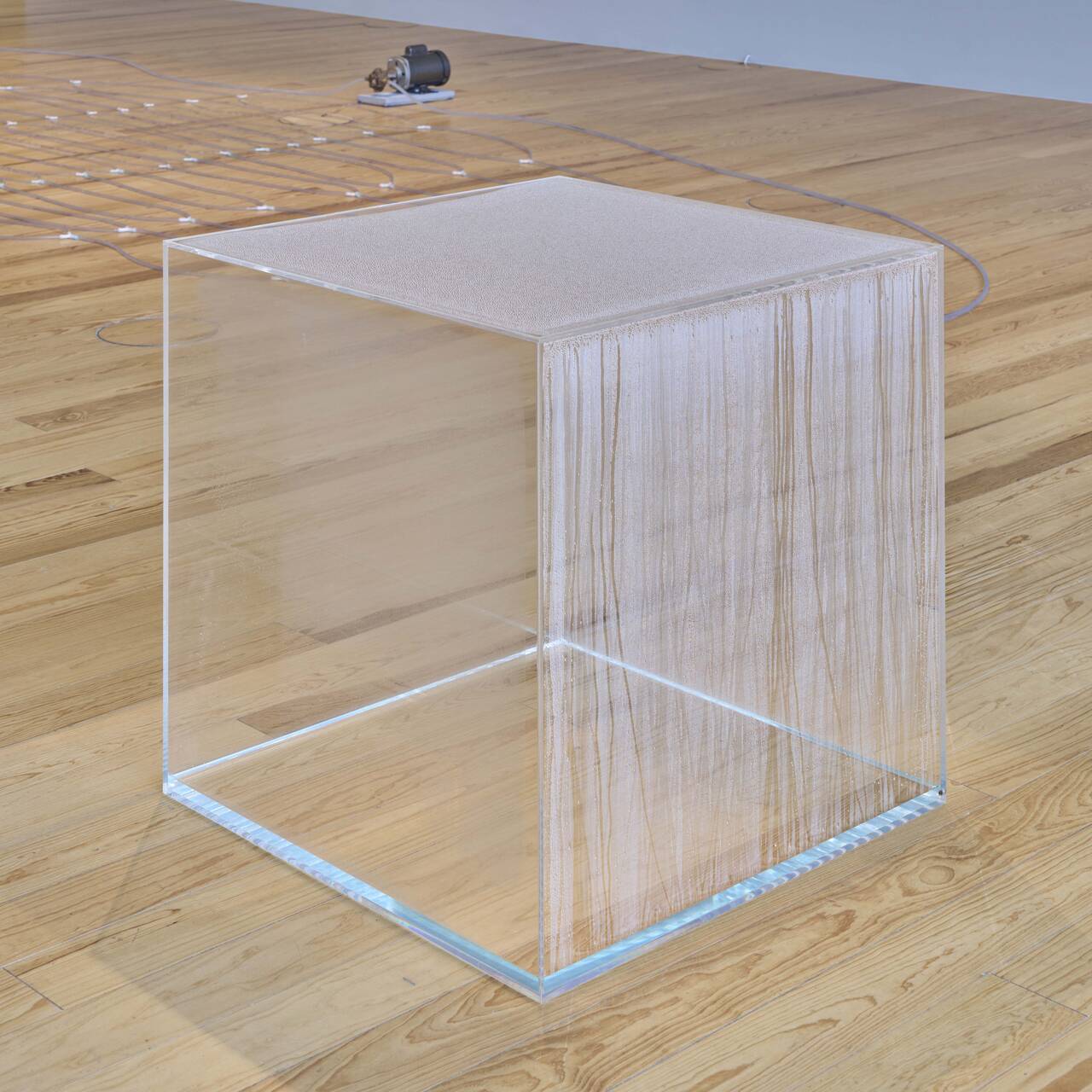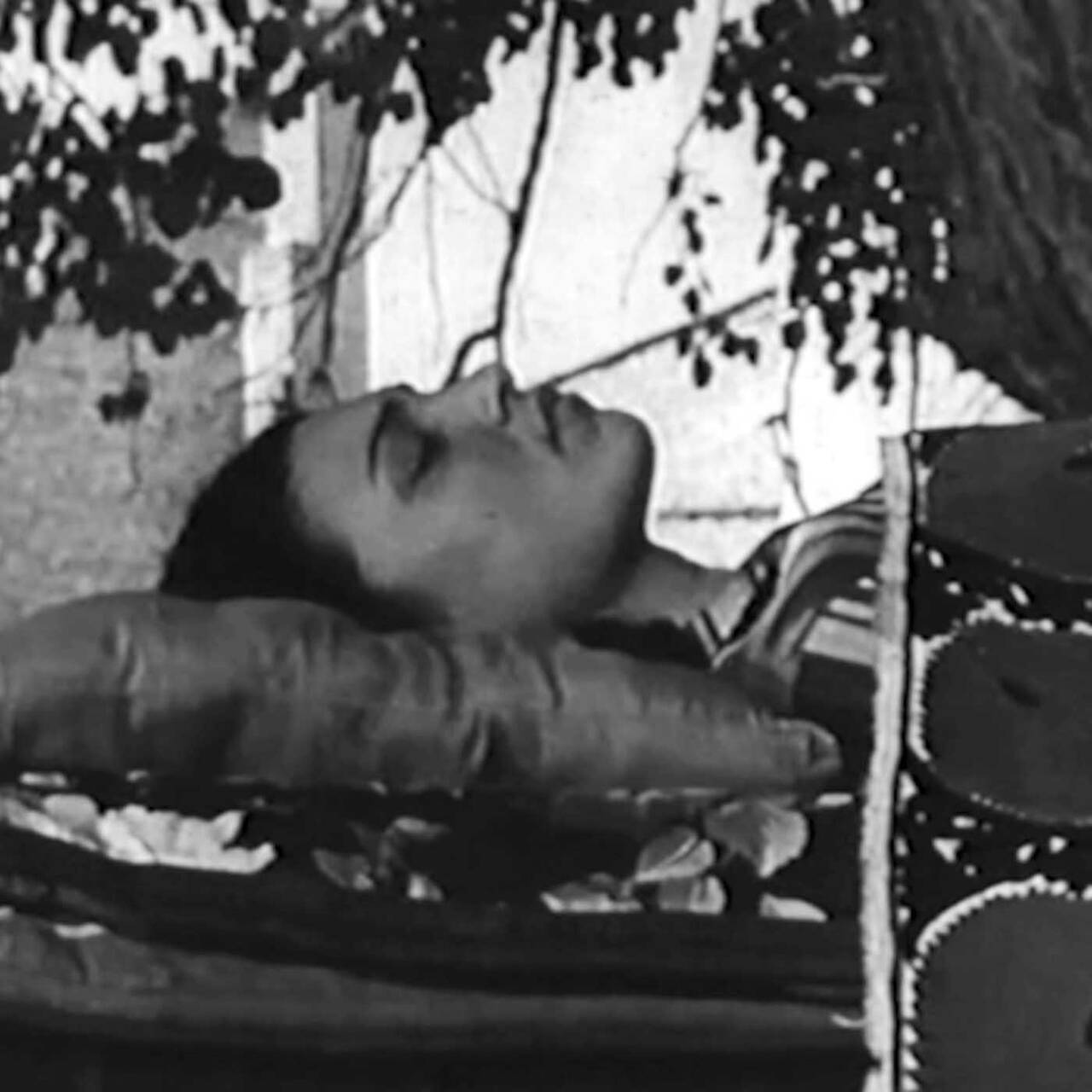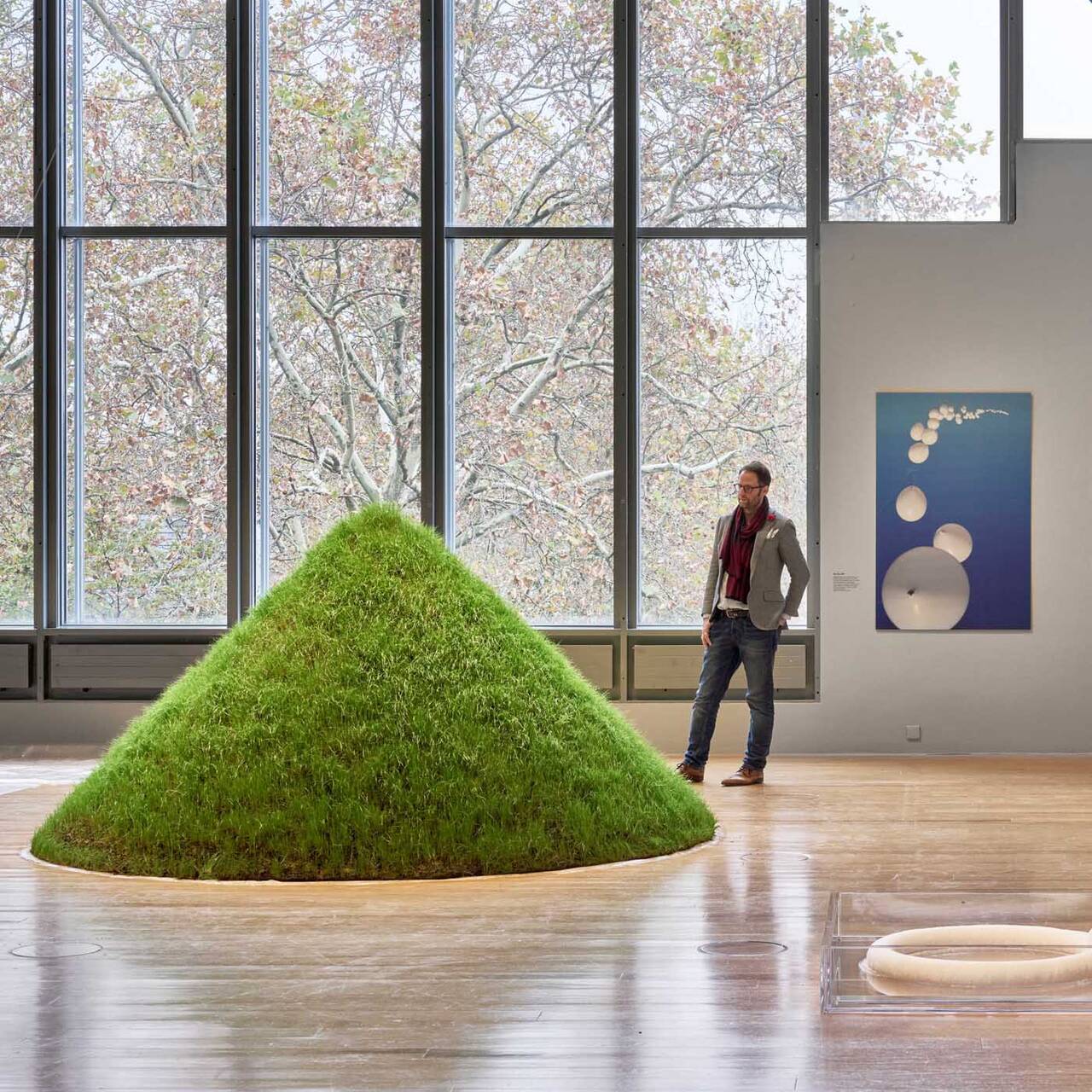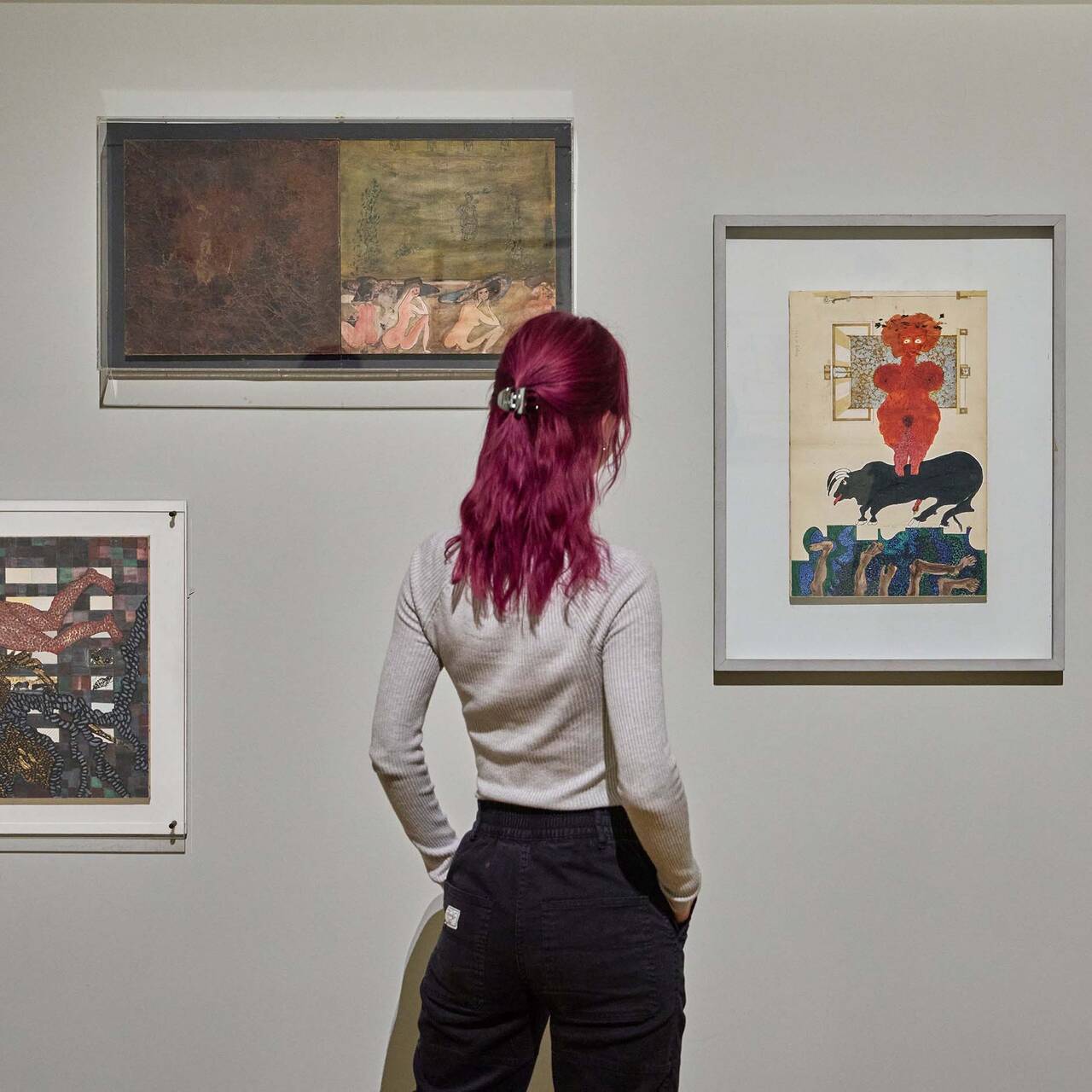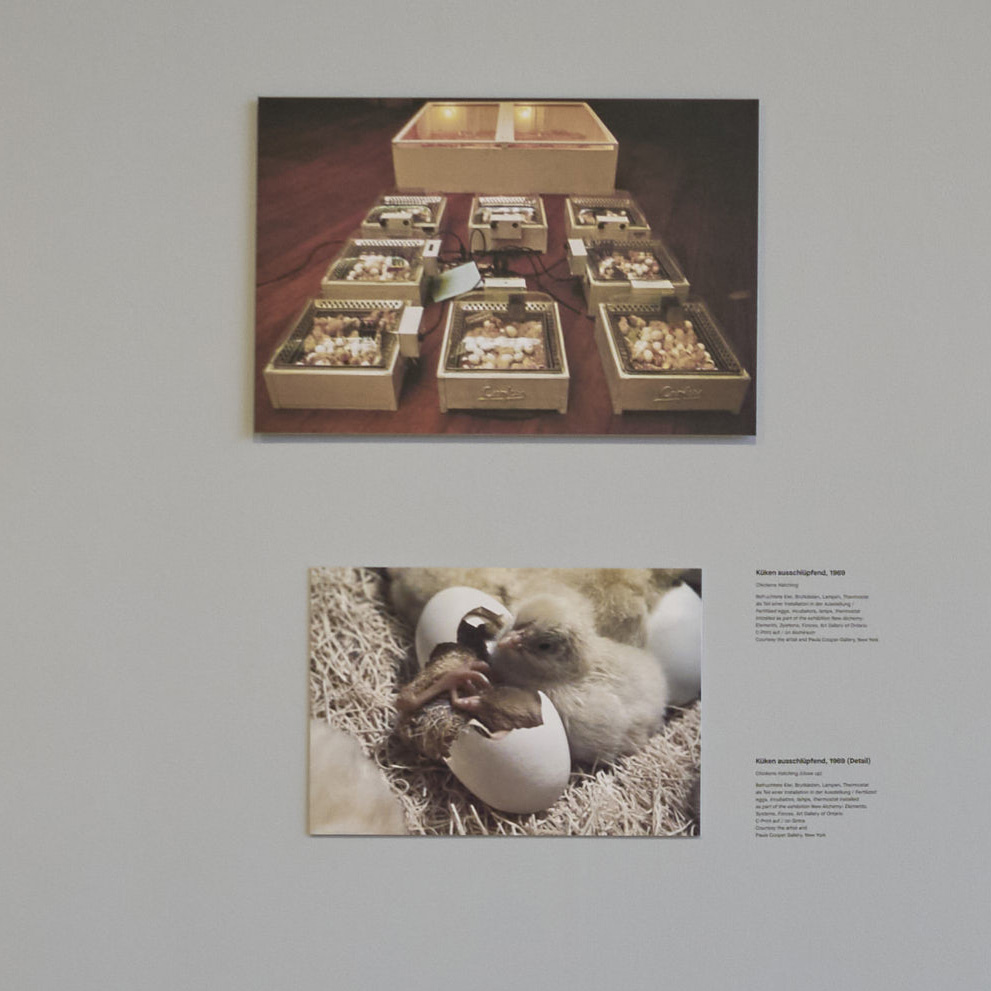Daffy Duck is an integral part of COSIMA VON BONIN’s artistic oeuvre, but what’s the story behind this polarizing cartoon character?
It’s hard to miss it on entering the COSIMA VON BONIN. FEELINGS exhibition: A black duck against a green background seems to be fighting against the deep black nothingness and adorns several canvases arranged in the room. Sometimes despair is written all over his face; sometimes he bravely and confidently resists his potential disappearance. In another image, he looks at the viewer in panic as he shoves the cut-out words “The End” out of the picture frame, apparently wanting to prevent the imminent end of his performance. Ultimately, though, all his efforts are in vain: The curtain has fallen and the duck has disappeared behind it. Did he have something else to tell us?
Another image: The same duck that was recently battling an all-powerful adversary – the black nothingness of the credits – now nonchalantly leans his right hand against the picture frame. He appears as a silhouette, meaning his facial features and other characteristics are not shown. His posture conveys a casual air, yet the title of the work, “Upstart”, belies the pose and hints at the hard work required for success.
The figure we see here is Daffy Duck, a cartoon character courtesy of Warner Bros., the film and TV corporation, who has featured in the works of Cosima von Bonin for some years now. “The uncrowned queen of cartoons” is how Daniel Kothenschulte refers to the artist in Monopol magazine’s recent article “Adlerauge und Adlerohr” (2024), citing her love of animation. Before Daffy Duck became part of her oeuvre, she discovered Disney’s star Donald Duck, who was soon followed by other cartoon figures like Bambi and Bugs Bunny. But while they tended to appear only sporadically in the artist’s works, the feisty little duck by the name of Daffy pops up regularly – with excerpts from films and series featuring him often serving as inspiration for the works.
Who is Daffy?
“Malicious”, “selfish”, “greedy”, “nuts”, “jealous”, “egotistical”, “wacky”, but also “confident”, “spirited”, “carefree”, “non-conformist”, “gutsy”, and “misunderstood” – all these terms have been used to describe the character by his faithful fans and constant critics alike. But who is Daffy?

The mischievous duck made his first appearance in 1937. In the short film “Porky’s Duck Hunt”, he is hunted by rifle-wielding Porky Pig and, as a nameless character, plunges his surroundings into utter chaos. “I’m just a crazy, darn fool duck!” says daft Daffy Duck in the film as he giggles at his overwhelmed opponent and the audience. With this plucky performance, the black-feathered drake caught many an eye, as he differed from the well-known cartoon characters of the time such as Mickey Mouse. Daffy Duck’s lisping speech and spirited manner have been his trademark ever since.
A representative of the working class?
In her article “Daffy Duck Is My Anti-Hero – Or – What Makes Daffy Duck? An Analythith” (2022), film scholar Sloan De Forest notes that in his early phase Daffy Duck often took on roles from the working class. He was portrayed on film as a hard-working character who was unfazed by any job. According to De Forest, there is a parallel here with Warner Bros., which in turn became known as a working-class-friendly film studio in the 1930s.
Although Daffy Duck stood out for his uninhibited but always canny demeanor, Chuck Jones, Robert McKimson, and Friz Freleng changed this in the course of his makeover. They gave him a more distinct look and adapted his temperament.
A perpetual loser?
As a frequent antagonist of Bugs Bunny, Daffy Duck now became a selfish loser whose pranks and cocky behavior never worked in his favor. In subsequent films, his greed was intensified, and he was transformed into a character who wanted to enrich himself at all costs. “Mine! Mine! Mine!” was a popular utterance from the duck during this time and was a sign of his insatiable need for attention. Even today, the famous duck remains very popular and is best remembered for cartoon classics such as “Duck Amuck” (1953) and regular appearances in the “Looney Tunes” show (1930 to the present).
Daffy Duck’s most influential illustrator and director Chuck Jones gave us a good idea of his relationship with the duck in an interview with the Fresh Air radio talk show back in 1989: “[…] I always liked Daffy because he would continue beyond where I would stop, simply because I’d be afraid of what the community would think of me. Daffy continues.” Daffy Duck’s supposedly negative qualities are also his strengths. While Bugs Bunny is frequently a heroic figure (intelligent, confident, eloquent), Daffy Duck combines those human emotions to which we give little space.
An advocate of imperfection and emotion!
It is this humanity that makes him more relatable and likable. Back in 1987 – on the character’s 50th birthday – Daffy Duck’s consistent closeness to his viewers was noted in the article “At 50, with a New Picture, Daffy is Still a Wild Duck” in the Orlando Sentinel newspaper. In an interview two years later, Jones also noted that he himself harbors some Daffy traits: “[…] when I was working with him, all I had to do is reach down inside of me and bring the Daffy up to the surface and spread it out and take a look at it and see what would I do if I were – if I had Daffy Duck’s courage.”

Cosima von Bonin likewise appears to have a soft spot for this ever-failing character who is constantly forced to start anew. The prototypical loser. The good-for-nothing. The upstart. Daffy Duck’s imperfection acts as a social corrective and holds up a mirror to our curated world with all its pressures to perform. With his polarizing, over-emotional nature, he is the perfect figure with whom to identify in an exhibition that gives space to every form of emotion and state of being under the title “Feelings”.
At the end of the exhibition, Daffy Duck appears one final time – now as a preacher in a loincloth. “Church of Daffy” is the name of this life-size sculpture, which was created in 2023. Should we follow his example? Cosima von Bonin seems to have an answer to this question: “I would love to be like Daffy,” says the artist in an interview with Monopol magazine. Daffy Duck’s eternal adversary Bugs Bunny – reproduced as countless stuffed animals in Cosima von Bonin’s work “Blame Shifting” – is someone she unceremoniously throws into the trashcan. It’s a strong gesture with which the “uncrowned queen of cartoons” declares war on this perfection in rabbit form and at the same time places Daffy, as the patron saint of imperfection, on a pedestal in “Church of Daffy”. With his positioning at the edge of the platform, his triumph appears fragile. Will his hubris again prove to be his undoing?
